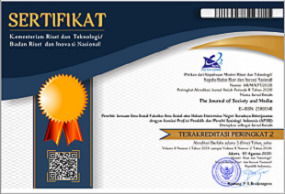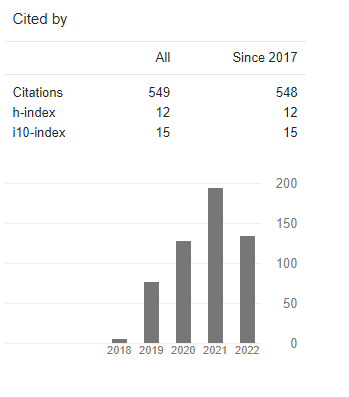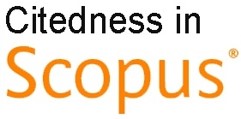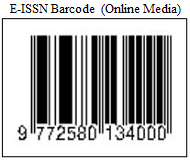Information Technology and Women's Liberation: Feminism in the Serial Story “Broken Kite”
DOI:
https://doi.org/10.26740/jsm.v7n1.p72-88Keywords:
feminism, cyberfeminist, identity, female gazeAbstract
The woman in the film kite breaking up, which is the subject of this article, is Kinan. Kinan is the main character in the series Layangan Putus which airs on WeTV, telling a love triangle story. Kinan is played by Putri Marino, a woman who can use information technology to reveal the behavior of her cheating husband and then decide to separate. This study uses television program serial media that are trending topics as part of women's position in the household and women's ability to act and speak with their information technology capabilities. The method used in this research is critical discourse analysis or CDA, which is strengthened by a literature study. The results of this study indicate that the film kites break up has accommodated the point of view of women or the female gaze in telling their experiences. Women who are represented in the figure of Kinan are described as active subjects who have choices in determining their behavior and actions. Women use information technology to get out of unhealthy relationships in marriage. Women are better able to show their identity even though they collide with the values that develop in society
References
Ardanareswari, I. 2018. Seks Dalam Layar. Dialog Pustaka.
Astuti, D. 2020. Melihat Konstruksi Gender dalam Proses Modernisasi di Yogyakarta. Populika, 8(1).
Azgha, R., Wardarita, R., & Wardiah, D. 2021. The Study of Feminism in the Novel of the Choice Mother God Works Rizka Azizah. Jurnal Pendidikan Tambusai, 5(1).
Barker, C., & Janne, A. E. 2021. Kajian Budaya. Pustaka Pelajar.
Elanda, Y. 2018. Representasi Mitos Kecantikan dalam Kolom Female. Journal of Urban Sociology, 1(1).
Elanda, Y. 2021. The Construction of an Ideal Mother amid the Covid-19 Pandemic: Gender Injustice Experienced by Career Women while Working From Home. HUMANISM : Journal of Gender Studies, 5(1). https://doi.org/10.30983/humanisme.v5i1.3670
Getty, M. S. 2018. Shaming the Other Woman (Pelakor) Female Catfight as a Spectacle in Social Media. Proceedings Language in the Online & Offline World 6: The Fortitude.
Kusuma, R. S., & Yuan Vitasari. 2017. Gendering the Internet: Perempuan Pada Ruang Gender Yang Berbeda. Jurnal ILMU KOMUNIKASI , 14(1).
Lobo, C. V. 2018. In Search of the Female Gaze: Women as Practitioners of Fashion Photography. Cental Saint Martins.
Long, Z. 2023. The Gendered Gaze on Social Media: the Female Gaze as Rebellion. BCP Education and Psychology, 9.
Meiliana, S. 2016. Sociology of Literature&Feminist Sociological Theory. Pustaka Mandiri.
Nadeau, F. 2022, January. Review Serial Layangan Putus. CNN Indonesia.
Putrianti, E., Sumaryadi, & Alya, C. W. 2022. Male Gaze the Role of Women in the Wedding Agreement Film: Case Study of Feminism Paradigm. The International Journal of Humanities&Social Sciences, 10(7).
Careful, A. 2019. Kesetaraan Gender dalam Dunia Pendidikan. Tarbawi, 1.
Sahmeni, E., & Afifah, N. 2019. Using Critical Discourse Analysis (CDA) in Media Discourse Studies: Unmask the Mass Media. Journal of Research and Innovation in Language, 1(2).
Saraswati, A., & Sartini, N. W. 2017. Wacana Perlawanan Persebaya 1927 terhadap PSSI: Analisis Wacana Kritis Norman Fairclough. Mozaik Humaniora, 17(2).
Sari, R., Putri, E. S., Herdi, H., & Hamuddin, B. 2018. Bridging Critical Discourse Analysis in Media Discourse Studies. Indonesian EFL Journal, 4(2).
Suharnanik, S., & Yulairini, S. 2022. Family Welfare Empowerment (PKK) Role in Set Woman Cooperation to Support Economy Creative Empowerment Based on Community. Revista de Cercetare si Interventie Sociala, 77.
Susandijani. 2018, February 20. Heboh Video Viral Bu Dendy: Suami Direbut, Pelakor Dilempar Uang. Tempo. Co.
Sutanto, M. S. 2020. Dekonstruksi Representasi Perempuan pada Poster Film Pahlawan Super Produksi Hollywood. Andharupa, 6(1).
Wardianto, K. G. 2018, February 25. Pelakor Jadi Tren, Apa kata Hasil Riset tentang Fenomena ini? Kompas.Com.
Xu, H., Zhang, Z., Wu, L., and Wang, J. C. 2019. The Cinderella Complex: Word Embeddings Reveal Gender Stereotypes in Movies and Books. Plos One, 14(11).
Zhu, N., & Chang Lei. 2019. Involved but Not Fixed: a Life History Account of Gender Roles and Gender Inequality. Frontiers in Psychology, 10.
Downloads
Published
How to Cite
Issue
Section
License
Copyright (c) 2023 The Journal of Society and Media

This work is licensed under a Creative Commons Attribution 4.0 International License.
 Abstract views: 397
,
Abstract views: 397
, PDF Downloads: 397
PDF Downloads: 397












